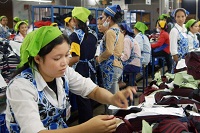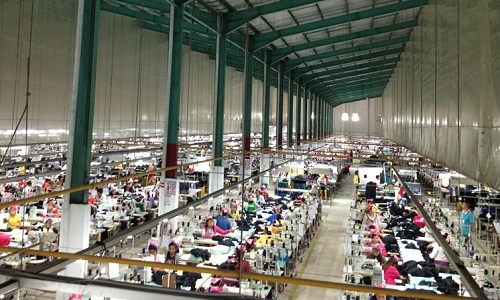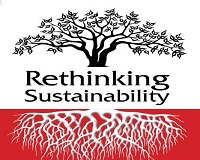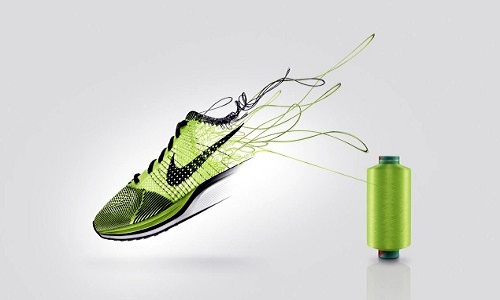FW
In order to promote the fashion sector in Italy, the Italian government has allocated €35 million to the Italian Trade Agency (ITA), Industria Chimica Emiliana (ICE) . Confirming this, ITA President Michele Scannavini said this is a 45 per cent increase in resources, compared to that of 2016. This fund trade shows, multichannel marketing and distribution, expanding ‘Made in Italy’ brands into the world's most important department stores and e-commerce.
Another difficult year is predicted for Italian fashion throughout the world. But there is only one winning strategy to overcome stagnant sales, geopolitical tensions, and looming protectionism: play aggressively. This means investing, internationalising and innovating Industry 4.0 factories.
Minister for Economic Development Carlo Calenda is pushing for the fashion industry to adapt to rapidly-changing markets and it will do so with the government's help. Money isn’t the problem, the projects are, the minister says.
Product finishers, weavers and thread makers are all part of what Florence Center for Italian Fashion (CFMI) President Andrea Cavicchi calls Italy’s immense fashion expertise heritage. The CFMI controls trade show firm Pitti Immagine, which should be defended by all means.
Due to increased adulteration with substances like comber noil and other cotton waste by Gujarat’s ginners, textile mills in Tamil Nadu have drastically cut back cotton procurement from Gujarat in favour of states like Telangana and Maharashtra.
The Southern India Mills’ Association (SIMA) has also written to the Union textile ministry seeking intervention in this regard. Till 2015, mills of Tamil Nadu used to procure about 50-60 lakh bales from Gujarat alone. Last year, owing to adulteration, procurement was reduced by almost 60 per cent and shifted to other states. This year, a similar trend is seen. Probably the practice of adulteration is only followed by 10 per cent of ginners in Gujarat. But SIMA is worried about farmers in Gujarat. If prices drop because the products are not quality-compliant, what the poor farmers will do, asked K Selvaraju, secretary general of SIMA.
Interestingly, prices for cotton waste like comber noil which is used in large quantities for currency printing and medical textiles, have also seen an increase over the last couple of months. From Rs. 60 per kg in October, cotton waste is now sold at Rs. 80 per kg. Several mills in Tamil Nadu allege this is due to increased demand by ginners in Gujarat, who are looking to mix the waste with virgin cotton. More than 50 per cent of the cotton used by mills in Tamil Nadu are from Gujarat.
Meanwhile, ginners in Gujarat aren’t worried about Tamil Nadu’s mills shifting purchase orders. As Dilip Patel, President, All Gujarat Ginners’ Association said only 20 per cent of cotton produced in Gujarat is sent to mills of South India. Earlier, demand was more now consumption by local mills has increased along with export orders. By later this year, about 40 lakh spinning units are expected to come up in Gujarat alone, which will increase the state’s consumption to 65 lakh bales.
Apparel Textile Sourcing will be held in Canada from August 21 to 23, 2017. Apparel Textile Sourcing Canada is an opportunity to meet international apparel, textile, fashion and fabric manufacturers, factories, and leaders. More than 40 industry experts will provide insights and expertise on all aspects of the apparel and sourcing industry. The exposition features workshops and seminars from the world's top experts in fashion, sourcing, logistics, marketing, government and many other topics.
The trade show connects buyers to manufacturers from around the globe. This is meant to give a boost to small businesses, retailers, manufacturers and designers across Canada. Hundreds of apparel and textile manufacturers from China, India, Bangladesh, Vietnam, Indonesia, Mexico, the US, Peru and other countries are expected to be present.
The show gives an opportunity to Canadian apparel and textile importers and retailers to access most current importing information from industry insiders and connect with the world’s major apparel and textile manufacturers. Canadian business owners and importers will have the opportunity to secure new partners among apparel suppliers from China represented at the event. Chinese suppliers are eager to do business with Canadian partners and work together to make the importing process smooth and efficient.
The global apparel and footwear market grew by four per cent in 2016. Much of this growth is driven by sports-inspired clothing. Both sports-inspired footwear and apparel are growing at a rapid pace, registering ten per cent and six per cent growth in 2016.
Though performance sportswear takes the lead in terms of market size, growth in sports-inspired clothing, or athleisure, is being witnessed in emerging markets such as India and Thailand as well as core markets such as the US. Athleisure has evolved from what brands dabbled in with capsule collections to a full-fledged business opportunity. With a wider selection and greater availability, sports-inspired products are gaining in popularity among a consumer base that seeks to incorporate sports-styled designs into their everyday wardrobe.
Sportswear has been up seven per cent for the third year in a row. However, 2017 will prove to be a challenging year for all categories including athleisure. Apparel and footwear growth will continue with a CAGR of two per cent in constant value terms to 2021, but the era of robust growth following the last recession could be over. This is a time of Brexit, a Trump presidency, China’s slower growth combined with an increasingly crowded market and consumer priorities shifting away from consumption.
Bangladesh's export earnings will cross $ 600 million in five years. This was announced by the commerce minister Tofail Ahmed. As the chief guest, he was addressing the opening ceremony of three international trade shows on RMG sourcing in Dhaka on yesterday.
He further went on to say that when the Awami League assumed office, the export earning of the country was $ 14 billion. Last fiscal year, the exports clocked $ 34.2 billion. If the trend continues, the export earnings would exceed $ 60 billion in 2021, he added.
Further Tofail Ahmed declared that the government was offering 15 per cent cash incentive in furniture, 10 pc in plastic and 20 pc in agricultural products. Stating that ready-made garment (RMG) was the main forex earner of Bangladesh as nearly 82 pc foreign currency come from this sector, he said that RMG has reached this stage overcoming difficulties and it also has the potentiality to go a long way.
More than 30 products of packaging and accessories sector are required for RMG and those were used to import from abroad. Now the packaging and accessories products are being exported meeting local demand and the export of this sector would stand at $ 18 billion from the existing $ 6.12 billion, he said.
The three exhibitions - the 16th edition of Garmentech Bangladesh, the 8th edition of International Yarn & Fabrics Sourcing Fair and the 8th edition of GAP Expo - are being held simultaneously at International Convention City Bashundhara, Dhaka.
"Brexit is going to have an adverse impact on Cambodia’s garment export sector, the International Labor Organization (ILO) has warned. Though new duty-free access to the US will ease pressure on exporters for some time, Cambodia’s recent rise to lower-middle income status could also add to its challenges in a few years. International Labor Organization wage specialist Malte Luebker said, “Exports continued their strong growth over the first half of last year, up 10.8 per cent year-over-year to $3.5 billion."

Brexit is going to have an adverse impact on Cambodia’s garment export sector, the International Labor Organization (ILO) has warned. Though new duty-free access to the US will ease pressure on exporters for some time, Cambodia’s recent rise to lower-middle income status could also add to its challenges in a few years. International Labor Organization wage specialist Malte Luebker said, “Exports continued their strong growth over the first half of last year, up 10.8 per cent year-over-year to $3.5 billion.”
Garments currently make up roughly 80 per cent of Cambodia’s total exports and have been its most reliable growth engine for the past several years. The country has struggled to diversify its economy beyond garments, tourism, agriculture and construction.
Uncertainty of future business

Thanks to the EU’s Everything But Arms trade scheme, Europe has been Cambodia’s No. 1 garment export market since 2014, with the UK topping the list. But the pound’s slide against the dollar — 20 per cent between the third quarters of 2015 and last year — is making those exports more expensive and could lead to a drop in orders. “Although Britain has not yet withdrawn from the EU, the depreciation of its exchange rate means that the trading environment has already become more difficult for the Cambodian garment and footwear sector. If this depreciation is long-term, this difficulty will endure,” the report highlighted.
Post-Brexit, Cambodia may face more long-term trouble if it loses the preferential access it now enjoys under Everything But Arms. The ILO says the UK could maintain that access for Cambodia and other so-called Least Developed Countries, or revert to World Trade Organization rules. In the latter case, Cambodia would lose its special access unless the government arranges a new free-trade agreement with the UK.
Duty free access to the US
The ILO says the duty-free access the US granted Cambodia’s travel goods exports such as wallets, handbags and suitcases could help grow the industry, which is categorised as a sub-sector of garment manufacturing in the coming years. However, it remains in its infancy and currently accounts for only 1.3 per cent of total garment exports. At the same time, Cambodia’s move last year from low to lower-middle income status means the country could lose its Least Developed status after a three-year grace period and the special access it gets to the rest of the EU along with it. “The Cambodian garment and footwear sector has some time to prepare for an environment in which its competitive advantage is reduced through loss of (Everything But Arms) status,” the ILO says, “but it will need to adapt to this reality over the medium term.”
"A recent study ‘Measuring fashion: environmental impact of the global apparel and footwear industries’ highlighted apparel industry has a major impact on climate. Combined, global apparel and footwear industries account for roughly 8 per cent of the world’s greenhouse gas emissions. That’s nearly 4 metric gigatons of CO2-eq, almost as much as the total climate impact of the European Union, according to ClimateWorks Foundation and Quantis, the publishers of the study."

A recent study ‘Measuring fashion: environmental impact of the global apparel and footwear industries’ highlighted apparel industry has a major impact on climate. Combined, global apparel and footwear industries account for roughly 8 per cent of the world’s greenhouse gas emissions. That’s nearly 4 metric gigatons of CO2-eq, almost as much as the total climate impact of the European Union, according to ClimateWorks Foundation and Quantis, the publishers of the study.

Over-consumption seems to be the reason behind this burning issue. The average global citizen consumes 11.4 kg (25 pounds) ofapparel each year. That translates to 442 kg of CO2 emissions per capita, or the same amount it would take to drive a car for 1,500 miles. Apparel makes up the lion’s share of that total, accounting for 83 per cent, while footwear contributes to 17 per cent of those emissions. The study also highlighted that in a business-as-usual scenario, the apparel industry’s climate impact is expected to increase 49 per cent by 2030, meaning the apparel industry alone will emit 4.9 metric gigatons of CO2-eq, nearly equal to today’s total annual US greenhouse gas emissions.
Diving deep More than 50 per cent of emissions are coming from just three stages: dyeing and finishing, yarn preparation, and fibre production. Fibre production, the first noted stage in the garment life cycle, accounts for 15 per cent of apparel’s total climate impact. Yarn preparation accounts for 28 per cent and fabric preparation, including knitting and weaving, contributes to 12 per cent of apparel’s impact on the climate. Dyeing and finishing alone contributes to 36 per cent of the impact, as it demands the most energy and substantial amounts of heated water. Cut and sew assembly accounts for 7 per cent of the adverse contribution to the climate, while distribution accounts for 1.3 per cent though that number could climb if companies increase their reliance on airing goods in response to speed to market demands.
Measures to be taken Companies will need to rethink energy. The biggest pollutants in the apparel supply chain depend on coal and natural gas to heat and power them, which means a massive reliance on fossil fuels. If manufacturers could shift to 60 per cent renewable energy and reach 60 per cent energy efficiency by 2030, that could contribute to an 80 per cent reduction in greenhouse gas emissions. On the supply side, digitalisation can lead to process efficiency improvements by reducing raw materials and waste. New technologies can also improve energy efficiency to further reduce emissions in key life cycle stages like dyeing and finishing and yarn preparation. On demand side, smart(er) consumption models, such as garment and accessory leasing or take-back programs, can extend the use phase of the article, reducing demand for new products. The final key area of focus expected to drive a significant reduction in apparel’s environmental impact, is looking to more preferred and recycled fibres.
Circularity is the key Though circularity has been among the biggest buzzwords in the past year, moving to a more circular economy, it seems, can’t be the only solution either. Circular material flow alone is not enough to ensure the apparel sector greatly reduces its impacts by 2030, as such solutions (that focus primarily on increasing rates of clothing recycling and recycled fiber content) do not alter the impacts of key production stages, such as dyeing and finishing.
Garment recycling is only sustainable when combined with a reduction in consumption of fast fashion and must take into account global equity considerations (evidenced by increasing bans on imports of second-hand clothing in developing nations. The scale of impact reduction this industry must achieve in the coming decade will only be possible with a combination of increased circular material flow, rapid transition to renewable energy sources, a significant increase in manufacturing process efficiencies, and smart design.
Due to short supply and improved exports as well as demand from domestic mills, prices of cotton may touch Rs 43,000 per candy by end of January. The price of the commodity has already surged 10 per cent to Rs 41,500-42,000 a candy in last two weeks. According to industry sources, daily arrival of cotton, which should have been more than 225,000 bales (a bale of 170 Kg), is about 150,000 bales. Everyone is trying to meet their export shipment deadlines and domestic demand and prices remain firm. Traders and ginners aver that farmers want cash rather than cheques and that's why they are holding the crop.
Bhagwan Bansal, President, Punjab Cotton Ginners Association says price of cotton have gone up due to short arrival and good demand from domestic mills and exporters. It may continue to increase further as there is no hope for rise in supply in the near future and pipeline is still dry. Due to cash shortage, farmers desist to bring raw cotton in the mandis across India. Kapas prices are ruling in a range of Rs 1,100-1,160 per 20 kg. According to Bansal, cotton prices may go up to Rs 43,000 per candy in the next one month if supply doesn't improve.
Exporters have no choice but to buy at any cost as they have to fulfill prior commitments. According to the exporters, they have not made forward contract for February and March in this season, because of the constant rise in the cotton prices.
In its bid to bring about a change in lives of some of the world’s 40 million garment workers, outdoor clothing retailer Patagonia has released a short 13-minute film, made in association with Little Village Films. Named Fair Trade: The First Step, it depicts the daily routine of a young Sri Lankan mother who works as a sewing machine operator in a factory that sews Patagonia clothing and her five-year-old son, who is able to attend the beautiful daycare built with the factory’s Fair Trade premiums. Some of the footage depicts the atrocious conditions, including chemical exposure, experienced by laborers in conventional factories, which really puts the Fair Trade experience into perspective.
So far Patagonia has sold 218 Fair Trade-certified clothing items (up from 11 in fall 2014). Now, it plans to reach 300 items by the end of 2017. The certification exists in factories as far as countries like Thailand, India, Colombia, Mexico, Vietnam, and Nicaragua. The clothing is certified by Fair Trade USA, which is a different entity than Fairtrade International but follows similar guidelines. This is an admirable step for a company that’s already renowned for its social and environmental progressiveness. Patagonia never fails to impress.
The National Tariff Commission (NTC) has slapped provisional countervailing duty on the import of Indian fine cotton yarn for four months. The duty, ranging from Rs 26.89 to Rs 55.8 a kg, will apply on the import of cotton having 55.5 or more counts originating or imported from India. The duty will not be levied on imports of the investigated product that are to be used as inputs in products destined solely for exports and are covered under any scheme exempting customs duty for exports under the Customs Act of 1969.
Last year after a complaint lodged by All Pakistan Textile Mills Association (APTMA) on behalf of the domestic industry, the commission opened a countervailing investigation under Section 11 of the Coun¬tervailing Duties Act of 2015 on April 20. The said duty is an import tax imposed on certain goods to prevent dumping or counter export subsidies.
Under the investigation, three Indian producers of fine cotton yarn (carded or combed) were selected for determining subsidies on the basis of the information provided by them and the government of India. The NTC concluded that the subsidised imports had hurt the domestic industry as they suppressed domestic prices.
The three India exporters that were selected for investigation by the NTC were slapped with Rs 26.89, 50.81 and 48.10 per kg provisional amount of countervailing duty, while a duty of Rs 55.8 per kg has been imposed on other Indian exports of fine cotton yarn.












